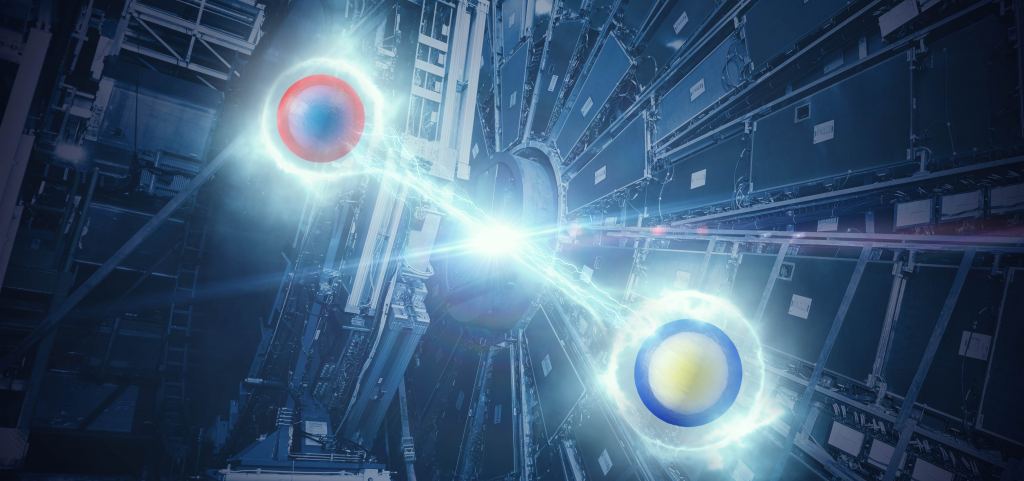Time travel. We’ve all thought about it at one time or another, and the subject has been explored extensively in science fiction. Once in a while, it is even the subject of scientific research, typically involving quantum mechanics and how the Universe’s four fundamental forces (electromagnetism, weak and strong nuclear forces, and gravity) fit together. In a recent experiment, researchers at the University of Cambridge showed that by manipulating quantum entanglements, they could simulate what could happen if the flow of time were reversed.
The research team was led by David Arvidsson-Shukur, a quantum researcher with the Hitachi Cambridge Laboratory (HCL) at the University of Cambridge. He was joined by Aidan G. McConnell, a Ph.D. student with Cambridge’s Cavendish Laboratory, the Paul Scherrer Institute, and Eidgenössische Technische Hochschule Zürich (ETH Zurich); and Nicole Yunger Halpern, an Adjunct Assistant Professor at the Joint Center for Quantum Information and Computer Science (QuICS) and the Institute for Physical Science and Technology (IPST) at the University of Maryland. Their paper, “Nonclassical Advantage in Metrology Established via Quantum Simulations of Hypothetical Closed Timelike Curves.”
In the realm of quantum theory, entanglement describes when a group of particles are generated, interact, or share proximity in such a way that their quantum states become identical. As physicists have observed for over a century, these particles will remain in this state long after, even though they may become separated by vast distances (what Einstein referred to as “spooky action at a distance.”) This is the basis of quantum computing, where entangled particles are used to perform computations that are too complex for classical computers.
 Illustration depicting quantum entanglement between particles. Credit: ATLAS Experiment
Illustration depicting quantum entanglement between particles. Credit: ATLAS Experiment
Whether or not particles can travel backward in time has also been the subject of considerable debate among physicists. While physicists have previously simulated models of how such “time travel” might occur, the Cambridge team took a new approach by connecting their theory to quantum metrology, which uses quantum theory to make highly sensitive measurements. As a result, the Cambridge team showed that entanglement can solve problems that otherwise seem impossible. Said lead author Arvidsson-Shukur in a Cambridge press release:
“Imagine that you want to send a gift to someone: you need to send it on day one to make sure it arrives on day three. However, you only receive that person’s wish list on day two. So, in this chronology-respecting scenario, it’s impossible for you to know in advance what they will want as a gift and to make sure you send the right one. Now imagine you can change what you send on day one with the information from the wish list received on day two. Our simulation uses quantum entanglement manipulation to show how you could retroactively change your previous actions to ensure the final outcome is the one you want.”
In their experiment, the team entangled two particles. The first was sent to be used in the experiment, while the second was maintained separately. The experiment then manipulated the second particle to effectively alter the first particle’s past state, changing the experiment’s outcome. To demonstrate the potential relevance of their experiment to quantum computing and other technologies, the team incorporated quantum metrology. In traditional metrology experiments, photons are prepared before being introduced onto a sample and then registered with a special camera.
Their results showed that the team can use time travel simulations to retroactively change the original photons, even if they only learn how to prepare the photons after reaching the sample. However, the team also noted that this effect was only observable in one out of four experimental runs, meaning the simulation has a 75% chance of failure. The theorists propose sending many entangled photons to counteract the high chance of failure, knowing that some will eventually carry the updated information.
 This illustration shows the “arrow of time” from the Big Bang to the present cosmological epoch. Credit: NASA
This illustration shows the “arrow of time” from the Big Bang to the present cosmological epoch. Credit: NASA
They also recommend using a filter to remove the “uncorrected” photons while the updated photons pass to the camera. At best, said Arvidsson-Shuku, the experiment will produce the desired results a quarter of the time, which is tantamount to getting the desired “gift” one in four times. Moreover, if the “gifts” are inexpensive, many can be sent over extended periods, eventually leading to a statistically significant number of desirable outcomes. Of course, Arvidsson-Shuku and his colleagues stress that this is not “time travel” in the traditional sense:
“That we need to use a filter to make our experiment work is actually pretty reassuring. The world would be very strange if our time-travel simulation worked every time. Relativity and all the theories that we are building our understanding of our universe on would be out of the window. We are not proposing a time travel machine but rather a deep dive into the fundamentals of quantum mechanics. These simulations do not allow you to go back and alter your past, but they do allow you to create a better tomorrow by fixing yesterday’s problems today.”
The team’s research was supported by the Sweden-America Foundation, the Lars Hierta Memorial Foundation, Girton College, and the Engineering and Physical Sciences Research Council (EPSRC), part of UK Research and Innovation (UKRI).
Further Reading: Cambridge University, Physical Review Letters

